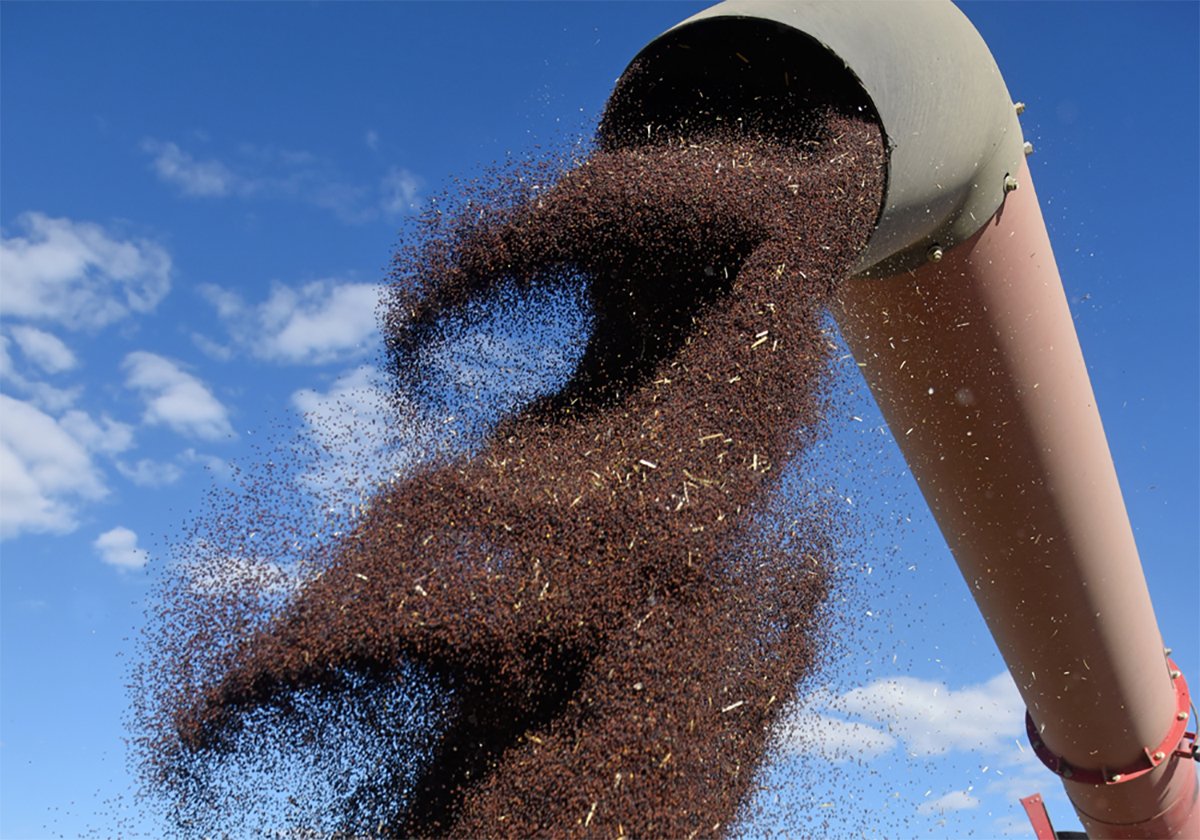A retired soil scientist says farmers are destroying valuable microorganisms in the soil by overusing glyphosate.
“It’s a very strong biocide for specific groups of soil organisms,” said Don Huber, professor emeritus of plant pathology and soil microbiology at Purdue University.
He claims that increased use of the herbicide due to the popularity of Monsanto’s Roundup Ready crops is leading to reduced yields, poorer quality and disease propagation.
Monsanto counters that many studies refute Huber’s findings along with anecdotal evidence provided by years of problem-free growing of Roundup Ready crops on millions of acres across North America.
Read Also

Ag minister says tariff situation with China is fragile, volatile
Agriculture ministers from across Canada said they heard canola producers’ concerns about tariffs but it seems unlikely they can do much about them.
Huber’s research, which has been published in peer-reviewed scientific journals, shows glyphosate attacks valuable organisms in the soil that increase the availability of nutrients to plants.
Over time, that depletes soil of important nutrients such as manganese and iron, leading to reduced yields and quality in the Roundup Ready crops as well as the crops that follow them in the rotation.
“Many of our commercially grown crops are much lower in mineral nutrients,” said Huber, who has 50 years of experience as a plant pathologist and soil microbiologist, including 35 years at Purdue.
He said the nutrient feed value in some corn and soybean crops can be as much as 50 percent lower than normal because of this glyphosate effect.
Studies have also shown a 10 percent yield drag in Roundup Ready soybean crops because of the glyphosate effect on microorganisms and the presence of the Roundup Ready gene, which also reduces nutrient uptake.
Sean Dilk, crop protection technology development manager with Monsanto Canada, said his company has conducted its own nutritional trials in the United States comparing Roundup Ready varieties with the same varieties without the trait.
After two years of trials at 11 locations, the company has concluded the trait and the herbicide have no impact on a crop’s nutritional content or yield.
Preliminary results from an Agriculture Canada study also indicate glyphosate has no impact on the nutritional content and yields of peas and wheat.
However, Dilk said the more compelling evidence comes from the millions of acres that growers seed to Roundup Ready crops every year.
“We haven’t heard growers say there are nutritional issues, nutritional deficiencies or yield effects when they switched over to Roundup Ready soybeans,” he said.
However, Huber said that is exactly what farmers are telling him after he presents his research at conferences in Canada and the U.S.
“What most of them say is, ‘boy, I’ve seen that in my fields. I worry about it. But nobody could tell me what was causing it.’ ”
Huber said his research also shows the chemical is toxic to natural biological control organisms that suppress disease and acts as a stimulant for disease-causing organisms.
“We’re seeing just a continual increase in severity of the diseases as a result of this,” said Huber, who is co-ordinator of the U.S. Department of Agriculture’s National Plant Disease Recovery System.
“Some of those diseases that we managed fairly effectively at one time seem to be going fully out of control on us.”
One example is the rise in fusarium head blight in Western Canada.
A study by Agriculture Canada cereal pathologist Myriam Fernandez established a “consistent association” between previous glyphosate use and fusarium infections.
Huber said fusarium would be a rare occurrence rather than a yearly event if it weren’t for the overuse of glyphosate.
Dilk countered with a 2008 study by Marie-Eve Berube of Laval University, which found that glyphosate use on previous soybean crops had no impact on fusarium levels in the following wheat and barley crops.
Huber said there will be dire consequences if growers continue to recklessly use the world’s most popular herbicide.
“It is inevitable that we’re going to see some very serious problems from a crop production and crop quality standpoint on a rather broad scale and generalized area,” he said.
The chemical attacks the group of organisms that are responsible for nitrogen fixation, and Huber claims the inability for growers to get proper nodulation in their legume crops is driving pea and lentil production out of the U.S. Pacific Northwest and into Montana, where no-till wheat hasn’t been a popular practice.
He advises growers to rotate their herbicides just like they rotate their crops and to apply glyphosate only as needed. They may also have to consider a mineral supplementation program to compensate for the nutrients destroyed by glyphosate.
Dilk doesn’t agree that farmers are abusing the chemical, but he does agree they should rotate modes of action with their herbicides.
Huber said he has no axe to grind with Monsanto. In fact, earlier in his career he consulted with the company on projects. He also said he doesn’t oppose glyphosate as long as growers use it judiciously.
“It’s a powerful tool that we’re losing in many areas because of our abuse of it.”
Huber said he feels compelled to inform growers about his research because he believes it is a mounting problem with dire consequences.
“If we continue to just bury our head in the sand, we’ll wake up one morning and we’re out of business.”















